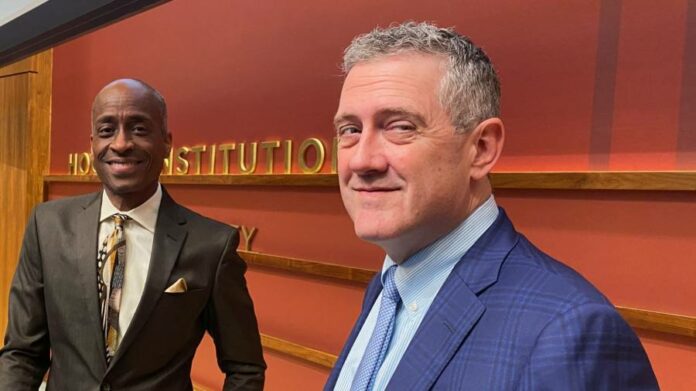A top Federal Reserve official has reaffirmed his support for lifting interest rates further as an “insurance” policy against inflation, underscoring divisions that have emerged at the US central bank about monetary policy.
James Bullard, president of the Federal Reserve Bank of St Louis and one of the Fed’s foremost hawks, on Thursday said he would keep an “open mind” going into the next policy meeting in June but suggested he is inclined to back another rate rise after 10 successive increases since last year.
Another quarter-point increase would bring the benchmark federal funds rate to a new target range of 5.25-5.50 per cent, higher than most officials deemed necessary in March to curtail inflation and at odds with the pause that Fed chair Jay Powell and other policymakers have recently suggested at a time of great uncertainty.
“I do expect disinflation, but it’s been slower than I would have liked, and it may warrant taking out some insurance by raising rates somewhat more to make sure that we really do get inflation under control,” Bullard told the Financial Times in an interview.
“Our main risk is that inflation doesn’t go down or even turns around and goes higher, as it did in the 1970s,” he said.
Bullard’s comments align closely with those from Lorie Logan, president of the Dallas Fed and a voting member on the Federal Open Market Committee this year, who earlier on Thursday said the case for a pause in June was not yet convincing.
Those stand in contrast with remarks from several officials this week who have urged a more cautious approach as well as Fed governor Philip Jefferson, whom the Biden administration just tapped to be the next vice-chair. Jefferson emphasised his expectation for growth to slow this year and for interest rates to be fully felt in the economy.
“History shows that monetary policy works with long and variable lags, and that a year is not a long enough period for demand to feel the full effect of higher interest rates,” Jefferson said on Thursday. He also cited a likely drag from recent stress in the banking sector as lenders retrench.
Bullard said concerns about the impact of banking stress were “overemphasised”, and what is likely to affect the economy more significantly is a recent decline in yields on Treasury bonds.
“We’re trying to have this disinflationary pressure and that’s supposed to come through higher rates,” he said, calling it “a bit concerning” that yields are “going in the wrong direction”. He added: “Maybe this will fuel a slower disinflation or even a little bit more inflation going forward than what we intend.”
Bullard reiterated that the current benchmark rate is at the low end of a range that would be considered “sufficiently restrictive” — meaning exerting enough pressure on the economy to alleviate price pressures. According to his calculations, a policy rate just above 6 per cent represents the top end of the range.
“It would probably be better and more prudent to be in the middle of the zone,” he said, citing that the labour market is also “not just strong, it’s very strong”. Tom Barkin, president of the Richmond Fed, told the Financial Times on Tuesday that “at best” the labour market had moved from “red hot to hot”.
Asked about the US congressional stand-off over raising the federal debt ceiling, the St Louis Fed president likened a potential default to “shooting ourselves in the foot” because it will probably lead to a spike in US borrowing costs.






